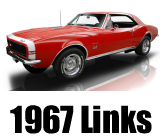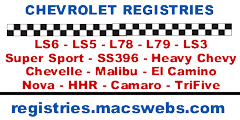 1967 Index |
 1968 Index |
 1969 Index |
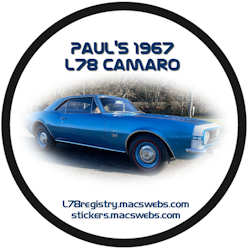 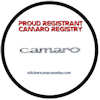 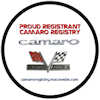 Stickers Registry Registry |
1967 Camaro |
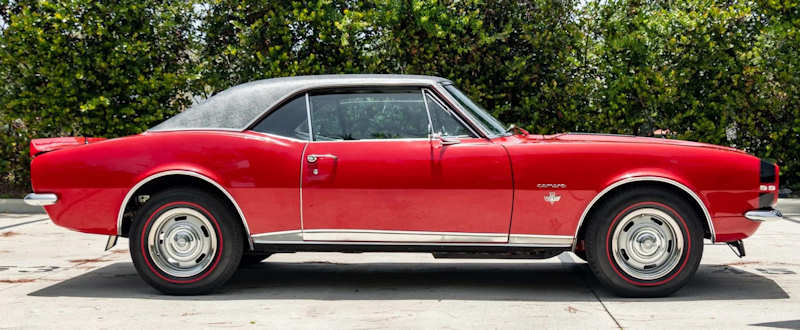
The 1967 Camaro was Chevrolet's answer to the wildly popular Ford Mustang and started the 'Pony Car' war. Set upon a 108-inch wheelbase the new Camaro duplicated the styling of a long nose and short rear deck.
A number of appearance and performance options were available along with standard and custom interior designs. Fifteen exterior colors and eight interior colors were available with interior colors being offered in four colors for the standard interior and seven colors for the custom interior in both bench and bucket seat configurations. The term "The Hugger" was introduced for the 1967 model year. The paint color "Hugger Orange" wasn't introduced until the 1969 model year. The 327 cid V8 was offered with a 2-bbl carburetor and rated at 210hp.
The new Camaro was chosen as the Indianapolis 500 pace car. Two were built for the race itself and others were used by race officials and dignitaries. Chevrolet offered replicas to dealers for the buying public. All replicas were Ermine White Super Sport, Rally Sport convertibles with bright blue deluxe interiors, special decals on the doors and blue 'bumble bee' stripes on the nose. Both 350 and 396 engines were available but there is no known breakdown of how many of each.
The nose stripe was part of the SS package at the start of 1967 production, but became a separate option (RPO-D91) in March 1968. The 1967 model was the only first generation Camaro to have both rear shocks mounted forward of the rear axle. The 1967 was the only Camaro to feature a right-side traction bar to counter wheel hop. The traction bar was standard equipment for all Z28 models, and was installed on other high performance models. The Z28 models were built starting on December 29, 1966, and low volume delivery began in January 1967. The Z28 was initially developed as a contender for the SCCA (Sports Car Club of America) Trans Am sedan racing series. The series had a displacement limit of 305 cubic inches which the Z28 met by combining a 327-cid Chevrolet block with a 283-cid Chevrolet crankshaft for a 4" x 3" stroke that yielded 302.3 cubic inches.
The "Z" in Z28 was at first nothing more than another option code along with others like Z23 for the Special Interior Group or Z87 for the Custom Interior. But, the Z28 had a special ring to it and soon became the model's official name. However, the Z28's built in 1967 carried no external identification other than wide racing stripes. Convertibles could not be ordered with the ZZ8 option. The headlight door covers of the 1967 Camaro RS were electrically operated. Later model years were vacuum operated.
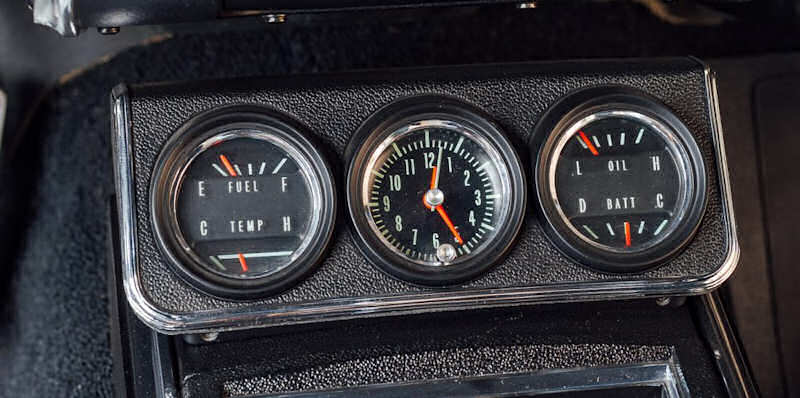
The center console design used in 1967 was unique to the year.
Additionally, the design of the optional instrument grouping which
mounted to the console was unique to 1967. The secondary instrument
cluster consisted of fuel gauge, temperature gauge, oil gauge,
ammeter, and clock.
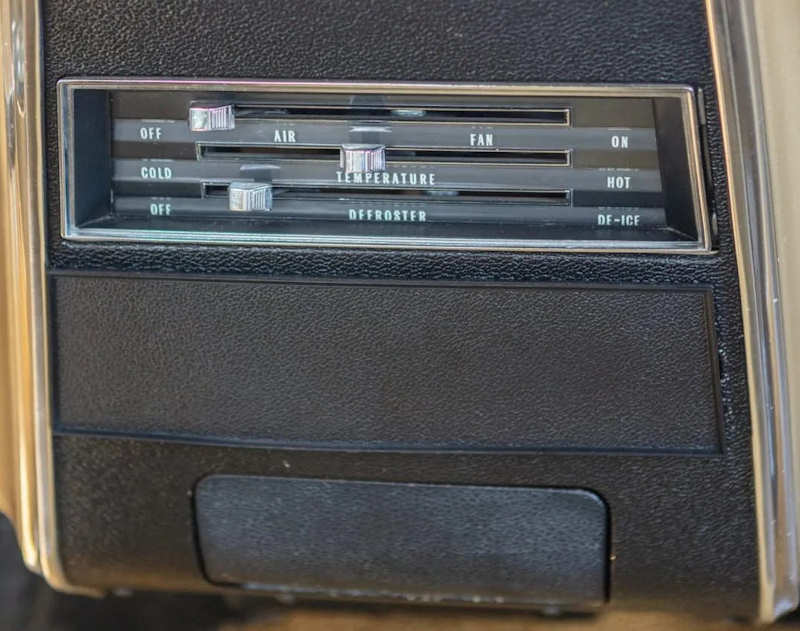
When no radio was ordered, the space was covered with a radio hole
cover. Often referred to as a "radio delete plate" that is
not entirely correct since any radio was optional, you can't "delete"
what you did not order. it would be equivalent to saying if you did
not order air conditioning that your firewall was AC delete.
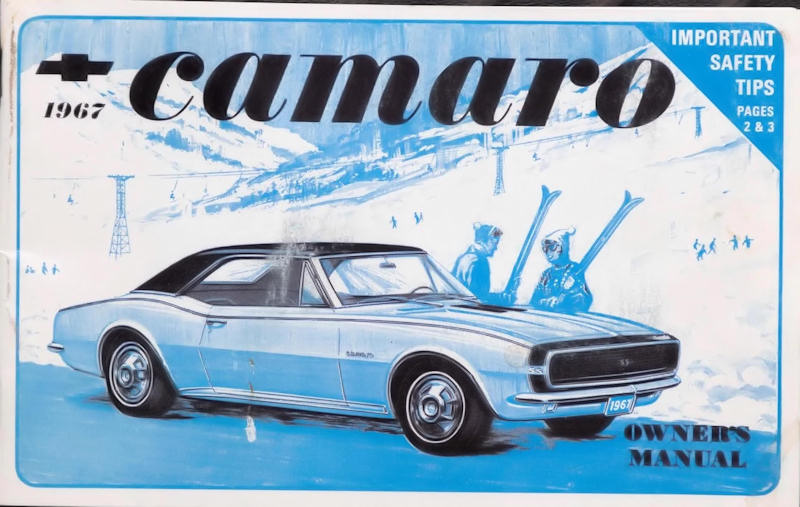
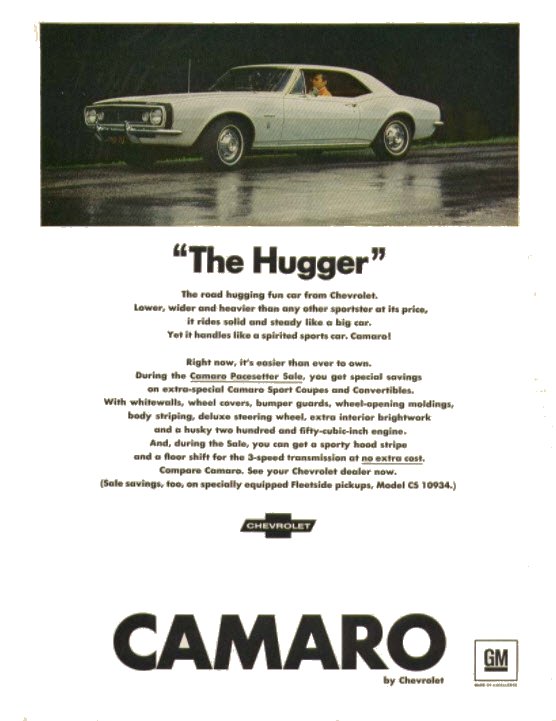
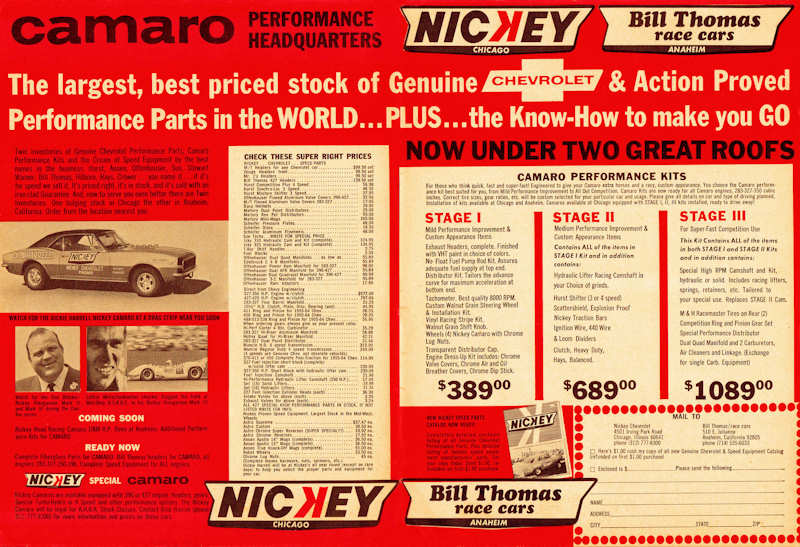
Oh, to be able to turn back the clock...Click for larger view.
© CamaroWorld
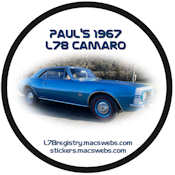


Custom stickers (3 sizes available) and custom calendars (various layouts) can
be found at my Stickers
& Calendars website.
 1967
1967 1968
1968 1969
1969 1967
1967 1968
1968 1969
1969